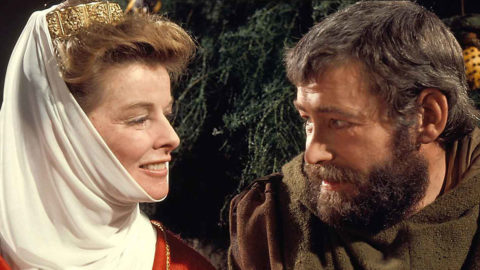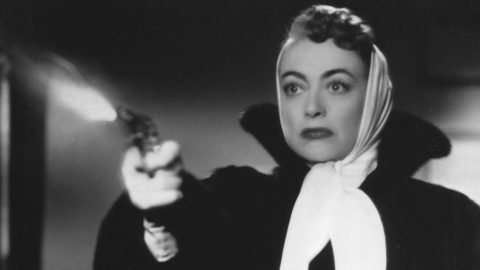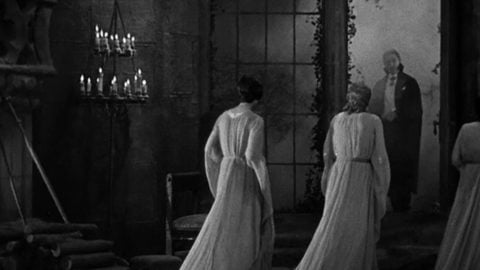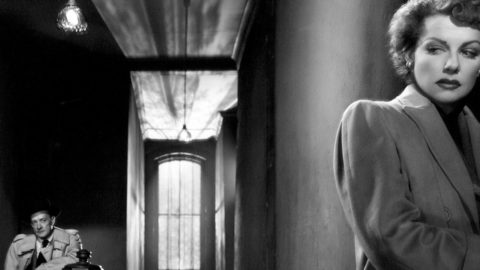Michèle Morgan
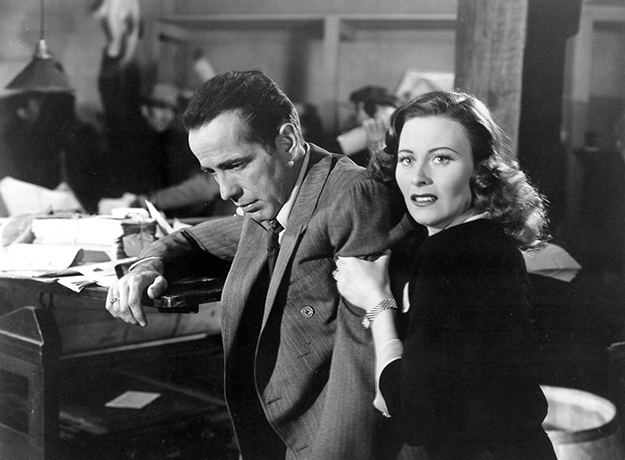
Passage to Marseilles
Reading the obituaries for Michèle Morgan, who died in December, gave me the same disquiet as watching her opposite Humphrey Bogart in Passage to Marseilles: something wasn’t quite right. She certainly wasn’t ignored, and the tributes were full of respect. But her appeal is often missing—that smoky drift of sex and vulnerability that makes her best performances clutch at your heart.
Like many actresses, Morgan had one early role that came to define her: as the waiflike Nelly in Port of Shadows, where she turns up suddenly in a seedy tavern, clad in a transparent raincoat for all the world as though she’s wrapped herself in the fog. She was 19 years old, already successful, but the gleam of those eyes ensnared audiences as surely as they do Jean Gabin’s forlorn deserter. “The most beautiful eyes in cinema,” they were christened by the French press. Not just a lovely shade of blue, but wide-set, slanted, with a slightly darker circle around the iris that made her close-ups extraordinary. Marcel Carné knew better than to gild the lily. Nelly’s hair is unstyled, at times almost stringy, and the raincoat was Chanel, but it was meant to look cheap.
Nelly set the pattern for many roles to come: trapped, desperate, looking for love to rescue her. She’s trying to run away from a lecherous guardian (Michel Simon), and she’s the object of desire for Pierre Brasseur’s sniveling gangster, but it’s Gabin (called simply “Jean” in the movie) whom she wants, instantly. “You’re too skinny,” he tells her, “but I like you.” When at last they sleep together, and Carné’s camera seems to occupy a pillow just beside them, the sight of Morgan’s hand reaching to stroke Gabin’s neck is worth any amount of foreplay.
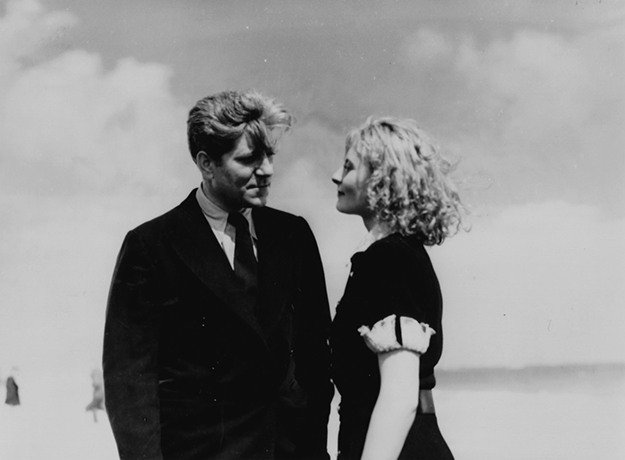
Remorques
My own favorite Morgan role is Catherine in Remorques, directed by Jean Grémillon, and marked by a stop-and-start production that only finished in 1941 just as Morgan and Gabin were preparing to leave France. Catherine already shows a more intense and womanly side to Morgan; here, her character escapes a wretched marriage herself before falling in love with Gabin’s tugboat captain. Morgan later said that this film marked her own brief affair with Gabin, and it very much shows on screen. In 2012 I wrote at MUBI,
Where Grémillon’s artistry shows the most is in the scene where Gabin and Morgan walk on the vast, deserted Breton beach. Their feet sink slightly into the hard sand and impede their progress, just slightly, not enough to make them turn back. They sit in an abandoned rowboat; Morgan fights the wind to keep her hair out of her eyes, Gabin looks down at his hands, and it’s as though they’ve already made love. They enter the deserted house, its furniture smothered under bridal-white covers, and Morgan climbs a curving stairway to the bedroom, and it’s as though Gabin’s emotions are towing him up after her.
Then came the Occupation, and Morgan’s stint in Hollywood, by all accounts an unhappy one. It began promisingly enough, with Joan of Paris, a Resistance drama that had Morgan cast as a waitress trying to help dashing flyer Paul Henreid escape; the film marked both their Hollywood debuts. Like a lot of wartime propaganda movies, Joan’s hammering at the message slows and stiffens the plot. But Morgan, thoroughly de-sexed and talking constantly to her Joan of Arc statue, still played with freshness and sensitivity. And she had nice chemistry with Henreid, who had admired her in her French movies. The film did well at the box office.
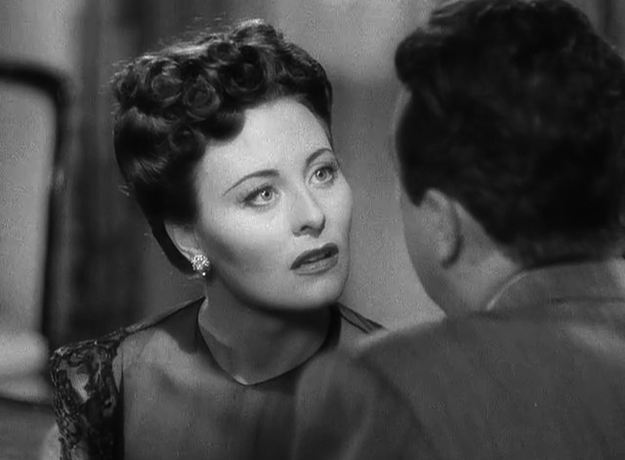
Higher and Higher
But Morgan’s momentum suffered a blow when she tested for Ilse Lund in Casablanca and the role went instead to Ingrid Bergman. In some of the obituaries it was said Morgan lost out because RKO asked Warner Brothers for too much money, but according to Alan K. Rode, whose biography of Michael Curtiz will be published this fall, that wasn’t the case. Curtiz and producer Hal Wallis weren’t crazy about Morgan’s acting, and while her price was high, Selznick got even more money for Ingrid Bergman.
Another tidbit that figured heavily in the obituaries was a musical that Morgan made at RKO, called Higher and Higher. This film “helped introduce Frank Sinatra to film audiences in his first big role,” was how the Washington Post cheerfully put it. I guess you have to have seen Higher and Higher to know that the best way to honor Morgan would have been to leave it out. Sinatra sings, and there is one amusing bit where Morgan, as a housemaid who’s impersonating a society debutante, gives a big speech at a ball, and starts to absent-mindedly polish the banister. Otherwise the movie is a stinker. Morgan’s hair had been darkened and stiffly coiffed, she was shot from angles that ill-served her wide face, and she was playing opposite a negligible Jack Haley (not Frank Sinatra, who was playing himself, badly). I feel as though as I can see her interest in an American career waning with every scene.
She did get a chance to star opposite Humphrey Bogart in Passage to Marseilles, and lived to regret it. Very much a Casablanca retread, with Curtiz at the helm and Sydney Greenstreet and Peter Lorre in the cast, Rode calls it “a $2 million war film that turned out to be 110 minutes long and three-flashbacks deep.” Morgan’s part called mostly for her to be dewy and devoted to Bogart. That was a tall order, as she didn’t get along with Bogart. And Curtiz, whom even gracious Olivia de Havilland once described as “just a villain,” made Morgan miserable with daily abuse.
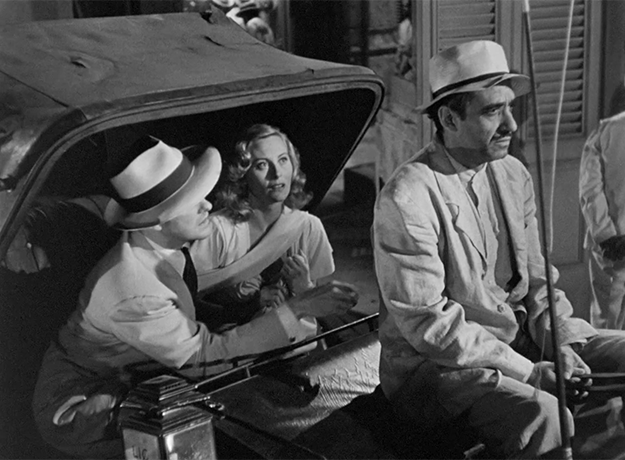
The Chase
She had married producer William Marshall in 1943, and in 1946, pregnant and with no offers forthcoming, Morgan went to Switzerland to make La Symphonie Pastorale for French director Jean Delannoy. She played a blind girl who is loved both by the pastor who has adopted her, and the pastor’s son. The role was a triumph, winning her the best actress award at the first Cannes Film Festival. Clearly France was where her great opportunities would always reside, but she returned to the U.S. to make The Chase that same year.
It is doubtful that Morgan recalled The Chase with any kind of affection. In those days stars rarely liked the low-budget stuff they did; all they saw on screen was their plummeting prestige. Yet this B noir is far and away her best American film, with its twisty plot that manages to make utter implausibility a tremendous virtue. Morgan plays Lorna, the wife of Eddie Roman (Steve Cochran), a millionaire gangster who locks her in the bedroom every night. (Eddie is obviously based on Howard Hughes, and The Chase would make an interesting double bill with Caught.) Lorna falls in love with Chuck Scott (Robert Cummings), a down-on-his-luck veteran who has taken a job as Eddie’s chauffeur despite knowing Eddie is crazy from the second they meet. The Chase’s many hallucinatory touches should not be spoiled, but Morgan is well-suited to the part, which is rather as though Nelly from Port of Shadows married her abusive guardian after he struck it rich. And the intimations of sex are far more blunt than anything she had been allowed in America before. At one point, director Arthur Ripley offers viewers a startlingly erotic view of Morgan’s bra straps, visible under her dress before she sleeps with Cummings, in a scene that makes no effort to conceal what’s going to happen once the camera cuts away.
Morgan returned to Europe and made another English-language film, this time Carol Reed’s sublime The Fallen Idol. The movie concerns Phile, an ambassador’s young son (Bobby Henrey), and Baines (Ralph Richardson), the yarn-spinning butler whom the boy worships. Trapped in a marriage to a woman so vicious she would kill a child’s pet, Baines has fallen in love with Morgan’s Julie, an embassy secretary. The film’s overarching theme is a child’s initiation into the adult world of constant deception, but it also has a great deal to do with loneliness—Phile has no playmates, and neither does Baines have affection in his life, save that of the boy and now Julie. It could be a strange thing to see Morgan, as exquisite as ever and flawlessly photographed by Georges Perinal, so in love with this homely, downtrodden servant. Yet it’s believable from their first meeting in a cafe, as the couple try to conceal their affair from an inquisitive and rather jealous Phile. Julie’s French accent marks her as an expat, possibly even a refugee, and Morgan looks at Baines with the yearning of someone who’s gone too long without kindness. This film was my introduction to Morgan years ago, as it probably is for many Anglophone cinephiles, and I loved her elegance, her emotional clarity almost as much as Baines did.
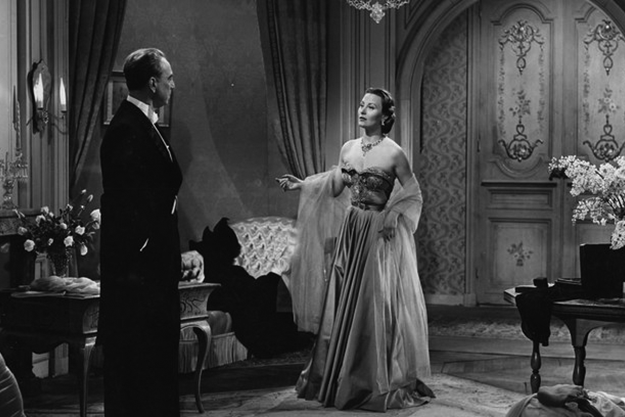
L’Etrange Madame X
Still only in her late twenties, Morgan returned to France, where her subsequent films offered an actress’s usual mix of high, low, and mediocre. It mattered not to French film lovers, however. The kinds of films she made were swept out of fashion by the New Wave, but she continued to work, and remained a star. As late as 1970, according to David Shipman, a comprehensive French poll named her the country’s favorite female star, with 27 percent of the votes. (The distant second-place finisher, with 17 percent? Brigitte Bardot.)
Like many other pre–New Wave actors, much of Morgan’s filmography is elusive for American viewers. Les Orgueilleux is a 1953 Yves Allégret film where she plays a widow in love with Gerard Philippe’s drunken doctor during a Mexican epidemic; it has always intrigued, but thus far eluded me. I did see L’Etrange Madame X, a Grémillon film from 1950 that marks his lowest ebb; it has not a trace of the passion that had marked Remorques, and makes for depressing viewing for reasons that have nothing to do with its mechanical plot.
One Morgan success that I have seen is Les Grandes Manoeuvres (1955), again with Philippe, a marvelous full-rigged romantic melodrama directed by René Clair in full color. Philippe plays a caddish cavalry officer who has bet his comrades that he can win the love of the recently divorced Morgan before the regiment departs again on maneuvers. Carefully set just before World War I, the way the film’s gaiety shades gradually into heartbreak is a metaphor that Clair handles with delicacy. Morgan so often played fear and hesitance that those who love her learn to wait for the moments when she gives emotion full rein. Here, it’s when she and Philippe are at a ball, and despite her best intentions, she finds herself waltzing with him to the strains of “Fascination.” Their dance flows through one room and into another, then another, past palm trees and candelabra, past other dancers they don’t even see, until they’re alone. So intense is Morgan’s focus on Philippe that Clair’s camera seems to be breathing along with her; their kiss at the end is more like a gasp. Morgan’s romantic abandon was more beautiful than her eyes.
Farran Smith Nehme writes about classic film on her blog, Self-Styled Siren, and recently published her first novel, Missing Reels. She is a member of the New York Film Critics Circle.



